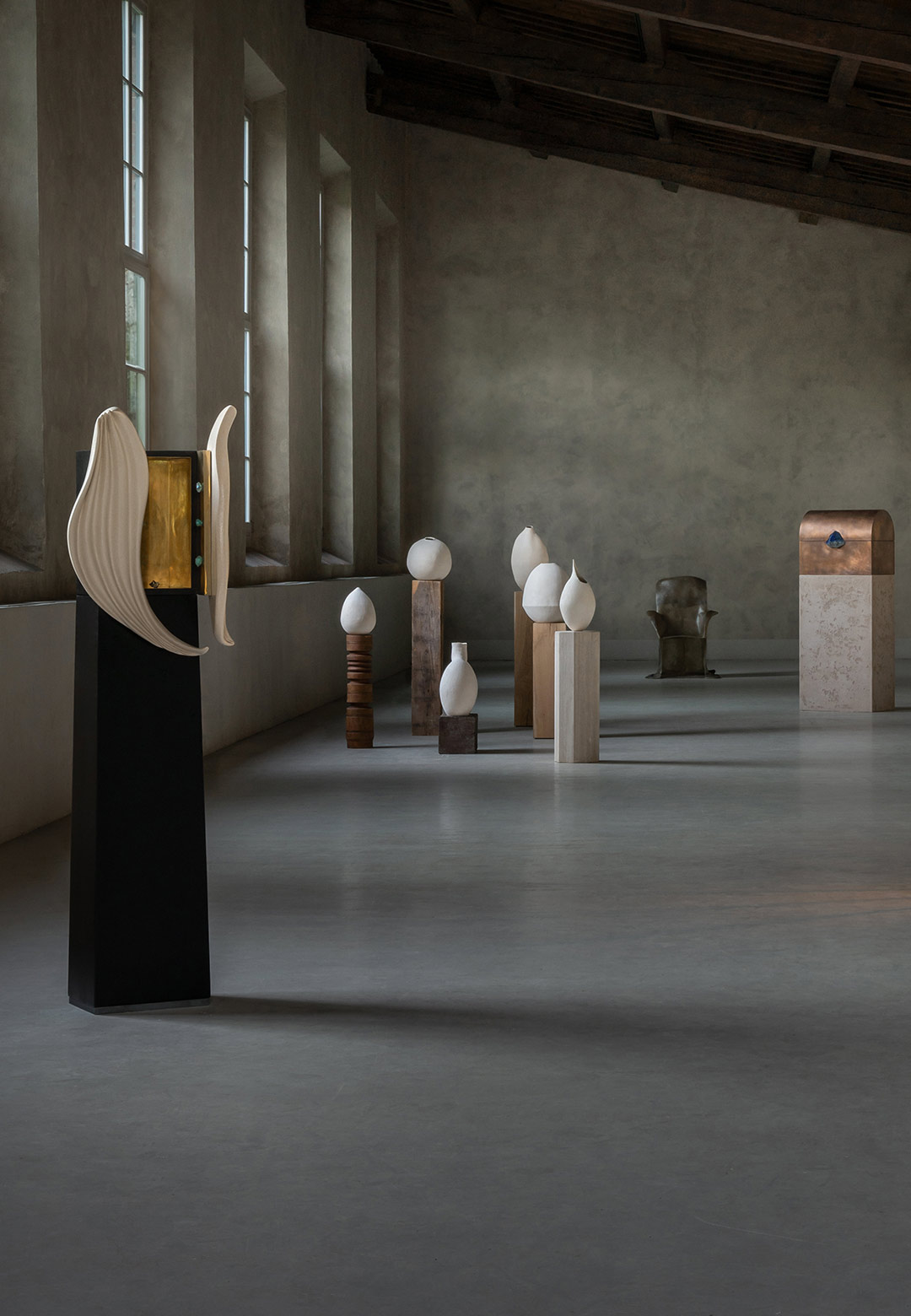International contemporary design and modern art gallery Galerie Philia is hosting an ambitious, research-led exhibition named Future Relics, which takes residence at the 16th-century Palazzo Corsini al Prato, in the heart of Florence, Italy. Running from November 1-21, 2024, the show coalesces the works of six internationally reputed designers—Andrés Monnier, Elsa Foulon, Kar Studio, Laura Pasquino, Morghen Studio and Pierre de Valck—who respond to the rich cultural, material and documentary heritage of Medici Florence.
In partnership with Shifting Vision as well as researchers and academics specialised in the Medici archives, the selected group of designers delved into the vast archival holdings of Renaissance Florence to explore the concept of a 'future relic'. From precious objects in the San Lorenzo Treasury to exotic treasures from global connections, the relics of Medici Florence serve as key points for this exploration. By examining local craftsmanship and diverse techniques, the project encourages artists to draw inspiration from the past while creating works of contemporary art and design that resonate locally and globally, both symbolically and conceptually.
Located in a historic garden by the Arno River, Palazzo Corsini al Prato becomes the inspiring setting for the design exhibition, drawing on the legacy of the powerful Medici family. A prestigious example of Baroque architecture in Renaissance Florence, the Palazzo, originally built for the Corsini family, was selected for its embodiment of the artistic and architectural achievements of the Medici era. According to the art and design gallery, this connection links the venue to Florence's cultural, political and social history, emphasising the shared legacy of both families' patronage of the arts.
"The six selected designers […] will raise broader questions through their new commissions such as how we can envision 'relics of the future' in a secular world, how handmade objects can become relics and exploring the role materials and techniques play in creating relics," shares the gallery.
"Philia's vision has always been to intertwine visual dialogues with philosophical and historical concepts in our curations," notes Ygaël Attali, co-founder of Galerie Philia. "The architectural backdrop of our exhibitions is central to our visual approach, exemplified by Palazzo Corsini, a venue that perfectly embodies the rich historical context of Medici Florence. This exhibition captivates by merging this iconic Renaissance period with contemporary creations," she continues.
At Future Relics, Mexican designer Andrés Monnier presents Altar, a sculptural installation symbolising the Medici's immense cultural legacy. Comprising four main pieces, Altar reflects the dynasty's early fascination with the Aztecs. Central to the work is a mask made of Mexican stone with black obsidian eyes, inspired by a Tenochtitlan jadeite mask from the Medici collection. The other three structures, crafted from rock, clay, metal, wood and glass, draw on the Florentine pietra dura marquetry.
Kar Studio from China has designed a conceptual chair for the show, inspired by Cosimo de Medici's throne. The chair design combines hand-kneaded clay modelling and fibreglass shaping, with four Chinese jade stones at its base, symbolising the four classical elements—earth, water, air and fire—found in both Renaissance iconography and Chinese philosophy (which also includes metal as the fifth element).
Brussels-born, Ghent-based designer Pierre de Valck drew inspiration from a Medici chest at the Palazzo Pitti to create a wedding casket in patinated bronze, with a lock made from meteorite rock. The product design references the gifts exchanged at key social events during the Medici era, highlighting how such objects reinforced social ties and cross-cultural alliances of the time.
French ceramicist Elsa Foulon presents Relic of the Future, a sculptural lacquered cabinet with wood and ceramic doors inlaid with pyrite nuggets, inspired by Italian Renaissance reliquaries. Featured at Future Relics, the furniture design explores the concept of a relic and invites reflection on what we choose to preserve in the present day.
Ceramicist Laura Pasquino from Amsterdam, The Netherlands, unveils a series of sculptural art pieces directly influenced by the Medici porcelain formula, found in archives detailing Francesco I de Medici's 1560s ceramic workshop which aimed to imitate Chinese porcelain.
Meanwhile, the Italian design duo Morghen Studio exhibits a modern interpretation of the freestanding column, a fundamental element adopted by the Florentine Renaissance from Classical antiquity. The design installation features a 'box' containing traces that evoke Ghiberti's Porta del Paradiso, Michelangelo's Pietà (both finished and unfinished) and the Tondo Doni, reflecting Medici's passion for hardstone mosaics.
As per Shifting Vision, "this initiative will stimulate designers to engage with the material culture of Medici Florence, increasingly diverse thanks to the city's flourishing global networks and exchange mechanisms, to delve into the superb craftsmanship of the local guilds and artisans in the creation of luxury objects and works of art, as well as the confluence of various techniques, materials and styles."
"However, future relics entail a daunting paradox. Drawing inspiration from Renaissance Florence, the project pushes the designers to explore the tensions between past, present and future and to create contemporary relics in a language that is at once personal and universal, local and global, material and symbolic, secular and divine," they continue.
- Amsterdam
- art and design
- art gallery
- belgium
- Brussels
- ceramic
- Ceramicist
- chair design
- China
- contemporary art
- contemporary design
- craftsmanship
- Design Exhibition
- design gallery
- florence
- Functional art
- furniture design
- italian design
- italian designer
- italy
- Mexican Designer
- Mexico
- product design
- Product Designer
- Sculptural Art
- Sculptural Installation
- the netherlands






 Sign in with email
Sign in with email










What do you think?